It was always the worst feeling:
My group of eager students was gathered at my bean table, calling my name over and over, and I’m racing around trying to find materials that will deliver the content I want to teach–content that will allow the students to authentically engage with the materials, content that will deepen their skills and knowledge.
Those days, when the lessons started that way (which happened more often than I’d like to admit) usually continued with me feeling scattered and left my students either with confused looks or a complete lack of interest. I would walk away from these small group lessons feeling like a failure, defeated and wondering if I truly knew how to teach my students.
I was always a firm believer in small group sessions–they helped reach the wide range of learners in my class. What I was lacking was someone helping me see how to prepare, plan, and execute these lessons without staying up all night trying to make it happen.
Today, I am that person for you. We are going to walk through those three steps: prepare, plan, and execute. Afterward, you will walk into your small group sessions with confidence and walk out knowing that you just rocked your lesson.
Step 1: Prepare
When you are not prepared, it impacts how you teach and how your students learn–but how do you prepare?
First of all, think about how you can connect to what is going on in the classroom, current events, or situations specific to your students that they can relate to. This is especially important for our ELLs. When we choose topics that they can relate to, they will bring more knowledge, which will allow the English language to create long lasting connections in their schema.
So, ask yourself: What are we learning or what is going on that my students can connect to?
NOTE: Try to stick to one theme or topic, especially if you are trying to maximize your 30 minutes.
Right now is a great time to connect with your student’s cultures through Hispanic Heritage Month or representing cultural voices on Indigenous People Day. There’s plenty of opportunities to bring in your student’s experience, perspective and voice, you just have to be on the lookout for it!
Another unit of study that I used with my newcomers from Mexico was on the migration of monarch butterflies. They were not learning about butterflies in their content areas, but, because a few of my students were from Michoacan, where the butterflies go, I felt it was a great topic to build a connection to the content. The students were thrilled to watch the butterfly migration map online, talk about their hometown in Michoacan, and learn facts–and a lot of English!–about butterflies.
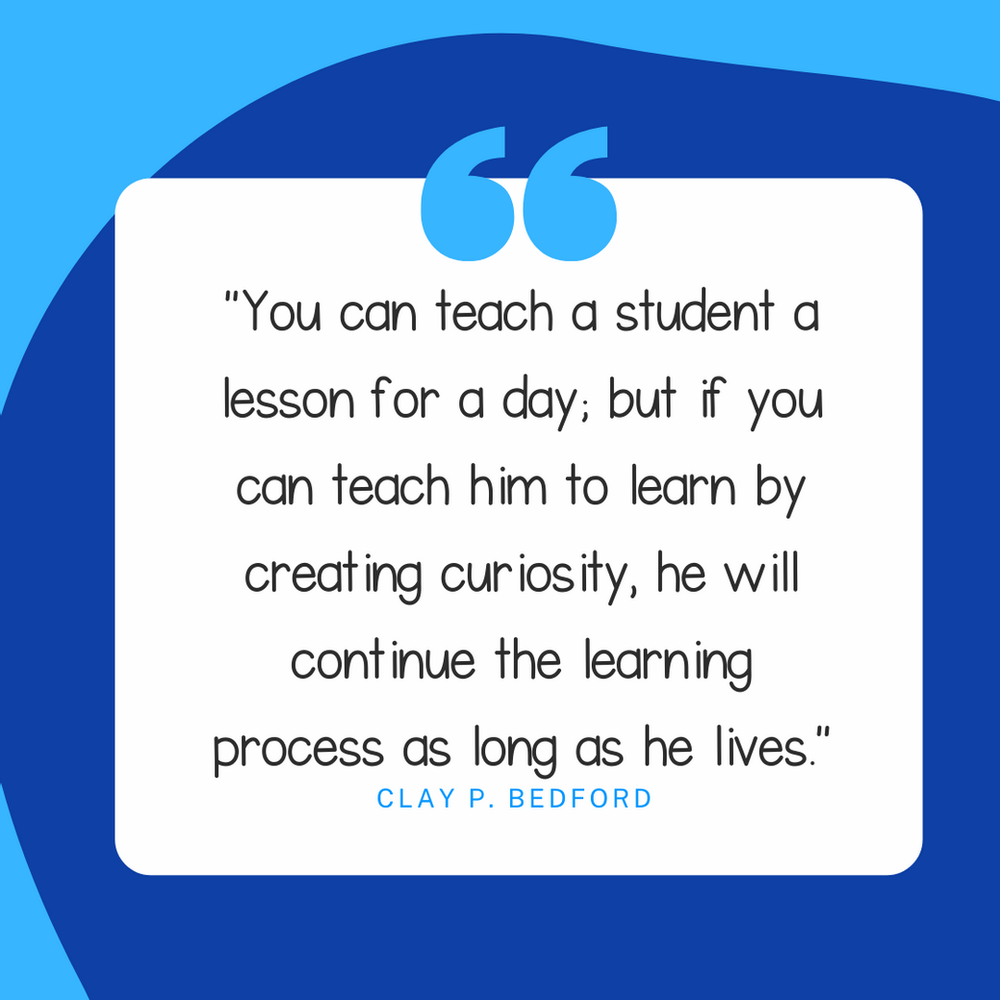
There is power in cultivating student interest. As Clay P. Bedford says, “You can teach a student a lesson for a day; but if you can teach him to learn by creating curiosity, he will continue the learning process as long as he lives.”
What overarching theme, topic, or essential question can you use to guide your lessons this week?
Step 2: Plan
Thirty minutes is not a lot of time. If we are not prepared for those first few minutes, we will most likely lose them for the whole lesson. If you only have time to plan one thing, plan the hook. What are you going to do to get your students engaged right when they walk into your classroom?
I worked once with a teacher who wrapped up a box and placed it on the stool in the middle of her room. As soon as the students walked in they all started asking, “What’s in the box?” They were hooked, and dying to know what was inside. The teacher then gave them different clues to guess what was in the box: a stuffed animal that related to the story they were reading that day. The students were more than ready to dive into the lesson after that.
Another easy way to hook students is by using pictures. Pull up a picture that relates to your topic and have them start naming things they see, asking questions about it, writing sentences about it. Pictures are a fool-proof way to engage students right away.
(Good news! I did the hard work for you and created a monthly set of daily picture cards to use as a warm-up. Click here to find out more!)
After the hook, use the rest of the time on a text passage that relates to your topic, one that allows you to work on vocabulary in context with pictures. If you have guided reading books, RAZ A-Z, or close reading passages, use that to guide your time.
Save the last 5 minutes for a quick extension activity or exit slip. Use this formative assessment time to check in on student progress or areas to reteach.
Step 3: Execute
Look back over your plans and add in any strategies or scaffolds that you need in order to unlock the language for all levels of your learners. This is as simple as jotting down a quick note that Eddie needs a sentence frame for the writing activity or you want to do a shared writing experience at the start of the lesson.
This step doesn’t have to take long–it’s simply a way for you to take one last look over your lesson and add in reminders of how to make it clear, meaningful, and impactful.
Once you have gone through this process, you will see your confidence soar in your ability to reach all learners! Your student’s progress will soar, too, with the materials and scaffolds planned for them.
If you want even more confidence that you are making the most of your 30-minute session, grab the growing bundle of the Close Reading and Differentiated Writing Passages Yearlong Bundle.
This is the perfect set to make the most out of your 30-minute lessons with intermediate English language learners.
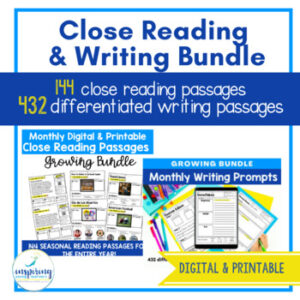
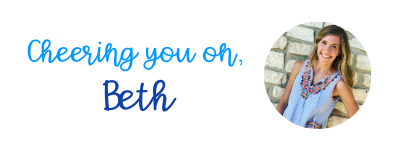
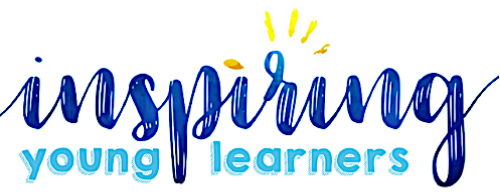
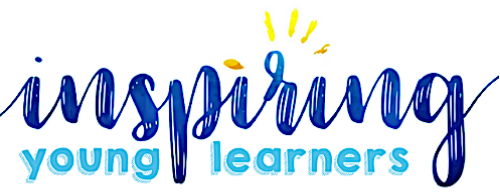
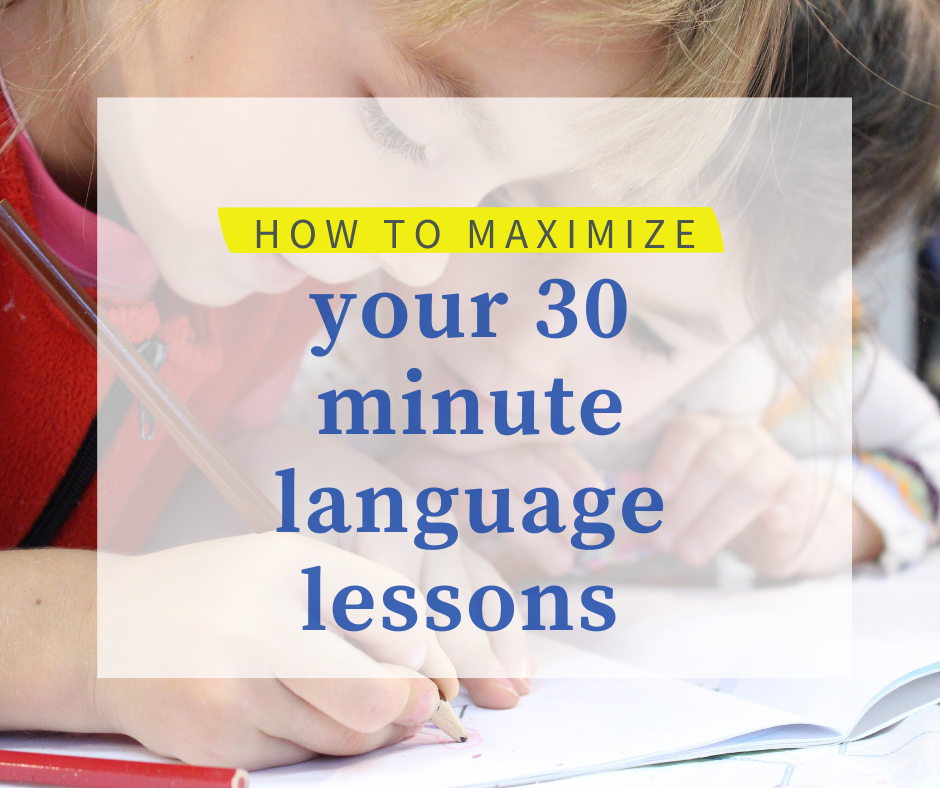
 STOP! Before You Expect Your ESL Students to
STOP! Before You Expect Your ESL Students to 


 Things No One Tells You About Parent-Teacher
Things No One Tells You About Parent-Teacher 



 Are your ELLs struggling to write complete
Are your ELLs struggling to write complete 